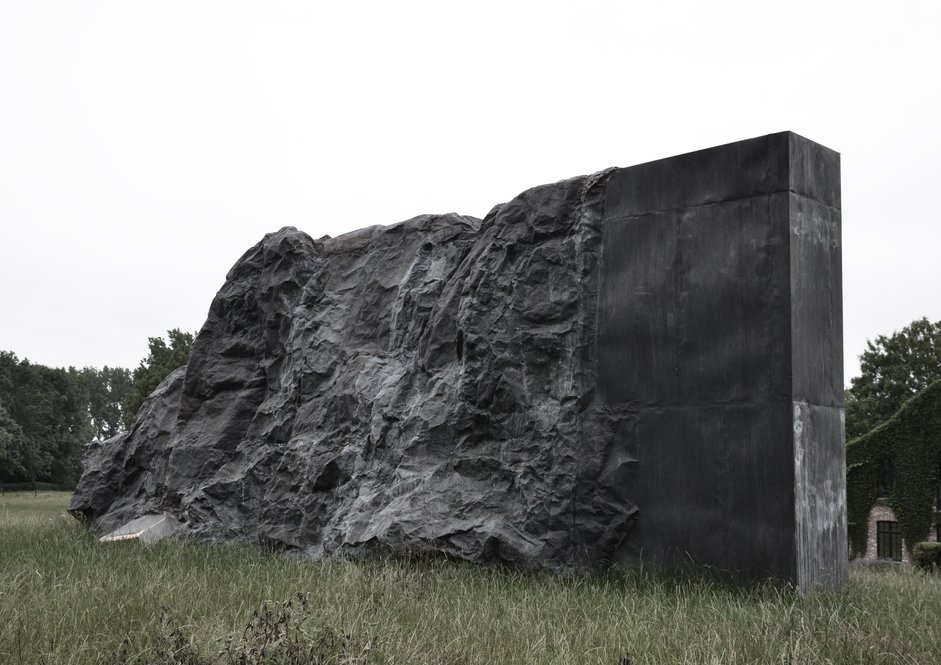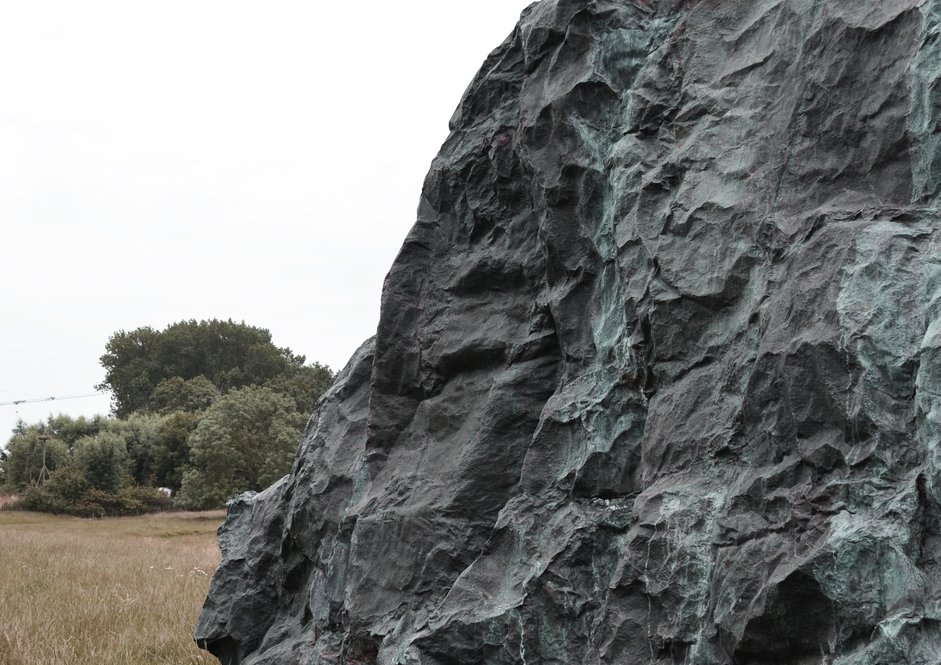hand hammered copper, 12 x 5 x 4,6 m (39 x 16 x 17 ft)
Marius Ritiu, Meteoritiu (Sisyphus Part IX)
In 2019 I started the “Sisyphus” cycle and it has reached its nineth episode.
With each episode, I am relocating boulders, my meteorites, around the world, from Transylvania to Antwerp, from Brooklyn to Queens, from Queens to Manhattan etc (rewriting the Greek myth of Sisyphus and situating it in contemporaneity). Through these self-made “meteorites” that either got stuck inside a gallery space, crashed onto a shopping cart in a park or “landed” between the wall of a house and a fence I am emphasizing the fragility of our existence.
The works are an invitation to humbleness. It intends to be a reminder that each of us is here, on Earth, for a brief moment in time; that humanity has existed for only 300,000 years, which is nothing compared to the estimated to be 4.5 billion-year-life of Earth, “our” planet; that our existence is insignificant when compared to the forces of nature, and that natural disasters are not discriminating when it comes to nationality, race, religion, sexual orientation, gender, and social status.
If a meteor the size of the work presented at Slag Gallery collided with Manhattan, it would turn the island into ash. For each of the “Sisyphus” episodes I wrote stories, somewhere between fiction and reality, inspired by events that happened during the making of the sculpture.
The copper technique that I started using for the first time in 2011, (when working with a family of Roma’s on a project), developed along the years and in 2019 it became a more personalised version of the Repousse technique that Bartholdi used when he created the Statue of Liberty.
For my working method (which evolved organically along the years), I don’t need a highly equipped studio. I have a few hammers, blow torches, copper sheets and rocks to hammer the copper onto. But not using high end machines, technologically advanced tools (like 3d printers, laser cutters, 3d milling devices etc) comes with a price: I have to spend hours, days, months to hammer the copper surface. So the biggest investment of my sculptures is actually labour: each of the 9 “meteorites” have aproximately between 1-9 million hammer hits on its surface.
I first anneal the copper plates - that is, heat them for some time at a temperature somewhat below the copper’s melting point - to make them as malleable as possible. This process is repeated several times throughout the making of the sculpture, as copper hardens and becomes brittle because it is deformed by the hammering.
Then I anchor the malleable copper plates onto the boulder with steel anchors and screws, step followed by the hammering of the copper sheets. Once the desired shape is achieved, I remove the copper, plate by plate, and reassemble it onto a steel support. Each plate needs to be connected to the steel structure with copper rivets.
After I reassemble the copper “meteorite” having the same shape as the rock that it was hammered onto, I solder (braze) all the overlaps and seems between the plates to create the illusion of one solid chunk of metal. A hollow copper body imitating a solid rock body.

